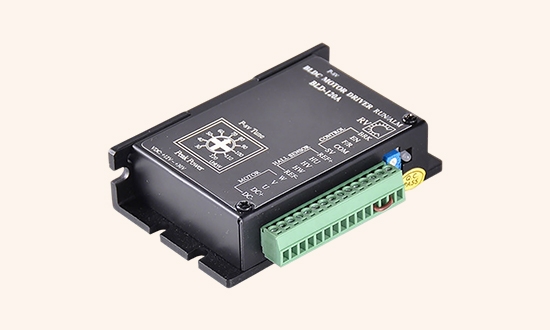A BLDC motor controller is an electronic device used to control the speed, direction, and torque of a brushless DC motor (BLDC). Unlike traditional brushed motors, BLDC motors do not have physical brushes, which makes them more efficient, reliable, and durable. However, they require a controller to manage their operation, as they need electronic commutation to function.

Key Functions of a BLDC Motor Controller
- Commutation:
Brushless motors rely on electronic commutation (instead of mechanical commutation, which is used in brushed motors). The controller's primary job is to determine the position of the rotor and switch the current in the motor's windings at the right time to produce continuous rotational motion. - Speed Control:
The controller regulates the speed of the motor by adjusting the pulse-width modulation (PWM) signal. By changing the duty cycle of the PWM signal, it controls the average voltage supplied to the motor, thereby controlling the speed. - Torque Control:
The controller also manages the motor’s torque by controlling the current flow through the motor windings. The more current supplied, the more torque the motor generates. - Direction Control:
The BLDC motor controller can change the direction of the motor by altering the sequence in which the motor's coils are energized. Reversing this sequence changes the motor’s direction of rotation. - Protection:
Most brushless DC motor controllers include protective features such as overvoltage, undervoltage, overcurrent, and overtemperature protection, ensuring the motor and controller don’t get damaged under extreme conditions.
Types of BLDC Motor Controllers
- Sensor-based Controllers:
These controllers use Hall effect sensors or other types of sensors to detect the rotor position. The sensor feedback allows the controller to precisely time the switching of the current in the motor’s windings. Sensor-based controllers are typically more accurate but slightly more complex. - Sensorless Controllers:
These controllers don’t use any sensors to detect rotor position. Instead, they rely on back-EMF (electromotive force) to determine the rotor’s position. While simpler and less expensive, sensorless controllers may struggle with low-speed operation and can be less efficient in some situations. - Vector Control (Field Oriented Control - FOC):
FOC is an advanced control method that optimizes the motor's performance by separating the torque-producing current and the magnetizing current. It is used to achieve high efficiency, precise speed control, and smooth operation. FOC is commonly used in high-performance applications like robotics, electric vehicles, and industrial machinery. - Trapezoidal Control:
In contrast to FOC, trapezoidal control is a simpler, less precise control method. It is suitable for low-cost, less demanding applications where exact control over torque and speed isn’t as critical. It generates a more "jerky" motion compared to FOC but is more straightforward and less expensive.
Key Components of a BLDC Motor Controller
- Power Stage (Inverter):
The power stage consists of transistors (typically MOSFETs or IGBTs) that switch the current through the motor's windings. These transistors are controlled by the logic section to provide the correct current and voltage levels. - Logic Circuit (Controller):
The logic circuit is responsible for interpreting the rotor position (via sensors or back-EMF) and controlling the power stage accordingly. It uses algorithms like FOC or trapezoidal control to decide when and how to switch the power transistors. - Feedback Mechanism:
Feedback is essential for precise motor control. If the system is sensor-based, feedback from Hall sensors or encoders helps detect rotor position. In sensorless designs, back-EMF serves as feedback. - PWM Controller:
Pulse-width modulation (PWM) is used to regulate the voltage supplied to the motor by controlling the duty cycle. A higher duty cycle means more power to the motor, thus increasing speed and torque.
Advantages of BLDC Motor Controllers
- Efficiency: Since brushless electric motors are inherently more efficient than brushed motors, controllers ensure the system operates at peak efficiency by optimizing power delivery.
- Reduced Maintenance: Because there are no brushes to wear out, brushless motors and their controllers require less maintenance.
- Precise Control: The controller allows for fine control of speed, torque, and direction, which is essential in applications requiring high precision.
- Quiet Operation: BLDC motors controlled by advanced algorithms like FOC run very smoothly and quietly compared to traditional brushed motors.
Challenges
- Complexity: BLDC motor controllers, especially sensorless or FOC controllers, can be more complex than traditional brushed motor controllers.
- Cost: The advanced components and technologies (like FOC) used in these controllers can make them more expensive.
- Startup Issues: Sensorless controllers may have trouble starting the motor at low speeds since they rely on back-EMF to detect rotor position.
Conclusion
A BLDC motor controller is essential for efficiently and reliably operating a brushless DC motor. It performs the vital role of controlling motor speed, torque, and direction while offering benefits like low maintenance, quiet operation, and high efficiency. Whether it’s for electric vehicles, robotics, or consumer electronics, BLDC motor controllers are key to achieving smooth, responsive, and long-lasting motor performance.
